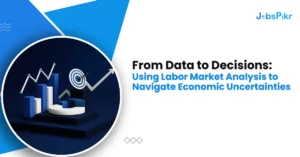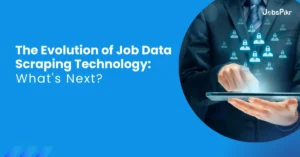For your convenience, we are going to list the top interview questions related to Jenkins. But before we jump into that, let’s get a quick overview of Jenkins.
Overview
In the life cycle of traditional software, the developer creates the whole model and after sanity checks, it goes for testing. The testers don’t have any role to perform during the development phase but eventually, they tend to get overloaded with many issues later on. It might lead to chaos, breaking best practices, and making last-minute changes. By using continuous integration, the developers create multiple codes in a day. Thereafter, the testers find out the problems in the app before time.
One such continuous integration is Jenkins. It is written in Java and lets developers integrate the changes in the project. Jenkins handles the remaining process for building, deploying, testing, and analyzing by automating it. The entire cycle of software development becomes faster.
Now, let us check out the top Jenkins interview questions you might be asked.
Top Jenkins Interview Questions and Answers
- What are the main features of Jenkins?
It is one of the most common questions. Well, the basic features of Jenkins are-
- It is an open-source and free automation tool
- Can be set up without any hassle on a different operating system
- Offers many plugins
- Easy upgrades
- Offers pipeline support
- Fast release cycles
- What do you know about continuous integration, continuous deployment, and continuous delivery?
Continuous Integration is a software development procedure where you make some changes to the software and then integrate it into the primary mode as soon as the patch is ready. This ensures the software is ready to be developed, tested, deployed, and monitored.
Continuous Delivery is a development process where Continuously Integrated alterations are tested and deployed Continuous in a certain environment, usually through the process of manual release, after successful quality checks.
Continuous Deployment is the development process where Continuously Integrated changes are employed automatically in the target successful quality checks.
- What is Groovy?
Apache Groovy is the object-oriented dynamic programming language used as the script language for every Java platform. It is used for orchestrating the pipeline of Jenkins and helps various teams to contribute to various languages. The syntax of Groovy is almost like Java. Thus, it works seamlessly with the Java interface. It comes with many features, such as Development support and Java Compatibility.
- What are common cases where Jenkins is ssed?
Since Jenkins is open-source tool, it can be used for all types of automation-based software. A few use-cases of Jenkins are given below-
- Reverse engineering jobs
- Software build jobs
- Key decoding jobs
- General-purpose automation
- Code coverage measurement jobs
- Data/Web Scraping related jobs
- Smoke/Sanity/Regression/CI test jobs and many other jobs where software automation can be applied
- What are the advantages of using Jenkins?
Jenkins is used for continuously monitoring a large codebase. It allows developers to locate bugs in the code and correct them. Email notifications are sent to the developers about the check-ins, that is the post-build task.
So, the advantages are as follows-
- Helps in detecting build failures during the stage of integration
- Sends a notification to the developer regarding the build report status with the help of the LDAP mail server
- Automates Maven release project using simple steps
- Tracks bugs easily
- Supports CI in test-driven development and agile development
- Updates automatic changes in build-report with the help of notification
- What is Continuous Integration?
Continuous Integration is the process of check-in the code of the developer continuously in a version control system and triggers the build for checking and identifying bugs in the written code.
It is a quick process and gives testers the opportunity to fix the bugs. One such continuous integration tool is Jenkins. In the process of software development, multiple developers work on various software. When you perform integration testing all modules are integrated together. This is known as the development practice for integrating the code in the source repository.
Whenever a developer or programmer makes a change to the current code, it automatically gets integrated with a system that is running the machine of the tester and makes it easy and speedy to test.
- What are the scopes of Jenkins credentials?
There are one of the two scopes-
- Global: This is used across all the jobs, which are configured in the Jenkins instance. It is suitable for user jobs for authenticating itself with the infrastructures and target services for accomplishing the purpose of the task.
- System: It is a special scope, which allows Jenkins itself to authenticate itself to infrastructure or external services for performing some defined tasks, such as sending emails, etc.
- Does Jenkins have prerequisites?
Jenkins offers a wide range of benefits, but it is not complicated to use. Also, it doesn’t require a large number of prerequisites. To use Jenkins there are two basic requirements-
- A repository for source code, which should be accessible. One of the popular source code repositories is the Git repository.
- Work build script that has to be checked into a single source code repository. One such working build script is the Maven script.
- What is the process to install Jenkins?
Jenkins is an open-source tool that is available to everyone. Furthermore, since the codes are usually in Java, they can be run on almost all machines. You will have to follow five simple steps to install Jenkins-
- Install Java as Jenkins is based on Java. It is better to install version 8 if you want to enjoy better performance.
- Now, install version 9 of Tomcat. Without this, the Jenkins war file will not run. Hence, it is a crucial step.
- You have to download the Jenkins war file. When the war file is installed, you can use Tomcat for deploying the Jenkins war file.
With Jenkins, you will get to enjoy a wide range of plug-ins and you can install relevant plug-ins. When you are done with the step, the user is directed to the dashboard Jenkins and this is where you start with the joyride.
- What is the working process of Jenkins?
The working process of Jenkins are as follows-
- Jenkins checks all changes in repositories continuously, and developers have to secure their codes.
- When the changes have been defined, Jenkins will detect them and use them for preparing a new build.
- After that, Jenkins is going to transverse through different stages in the usual pipeline. As soon as one stage is complete, the process is going to move on to the next step.
- In case on stage fails, Jenkins builds are going to stop, and the software is going to send a notification through email to the email using it.
- When the testing phase is successful, Jenkins is going to share the result with the team using it.
So, we have reached the end of the interview questions. By now you might be well prepared for your interview. Before you go in for the interview, make sure that you go through these important and commonly asked Jenkins interview questions. However, it is also important to have a basic knowledge of how Jenkins works.




